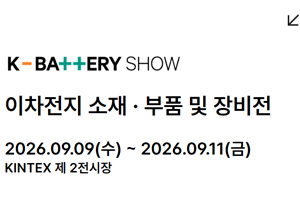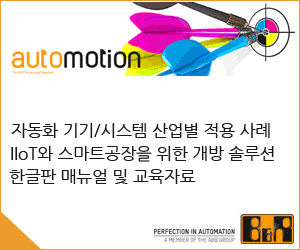The worldwide Supervisory Control and Data Acquisition (SCADA) market reflects the impact of new technology on SCADA components and cost- effective communications for both data and knowledge transfer. Today’s SCADA systems offer a new generation of technology components that are easier to integrate and provide improved capabilities and functionalities. After weathering the effects of the 2008-2009 global recession, the market has rebounded strongly, growing at high single- and low double-digit rates. As demand for oil recovers and funding is freed up, project activity can be expected to return to robust levels in coming years, according to a new ARC Advisory Group study.
A number of significant factors are driving the worldwide SCADA market in the oil and gas industry. These include the continuing worldwide demand for additional energy from carbon-based fuels, the shifting of exploration and production locations to more remote and hostile environments, and end user requirements to link SCADA to information technology and business systems. Operating companies are placing an increasing emphasis on vendor services over the entire value chain and asset lifecycle and are looking for additional functionalities in application software. “SCADA systems, together with advanced applications, improve visibility and the performance of geographically dispersed assets, and form the basis for real-time performance management of production and pipeline assets,” according to Senior Analyst Allen Avery, the principal author of ARC’s “SCADA Systems for the Oil & Gas Industry Worldwide Outlook”.
The Expanding Role of SCADA in the Enterprise
SCADA suppliers are offering more flexible hardware with added intelligence and emphasizing total solutions by coupling their hardware and software with service packages. Traditional SCADA suppliers are introducing new and innovative product features and helping clients develop migration planning programs. Suppliers are also offering a wider range of web-enabled advanced applications and packaged solutions, particularly for users seeking to integrate SCADA with business and enterprise level applications and supply chains. Beyond its traditional role of data gathering and control, the value of SCADA systems is being enhanced with the addition of applications that enable business intelligence, giving users better insight into the economics of their operations, the ability to better validate nominations and pipeline allocations, and tools to track carbon emissions to help comply with environmental regulations.
Emerging Markets Driving Growth
North America is the largest single market, accounting for slightly under a half of all shipments, and showed strong growth between 2010 and 2011, as pipeline activity continued to move at a brisk pace, and pipeline operators sought to update their systems to take full advantage of the functionalities of modern SCADA systems. EMEA, the second largest segment, saw more modest growth during the same period, due to a drop in activity in Western Europe. The market focus continues to shift to the developing regions of the world, where numerous major Greenfield energy projects are occurring at a pace that exceeds that of the developed regions. Asia, led by China, posted strong growth in project activity during 2010, and will continue to drive growth going forward.
www.arcweb.com
Shipments of Devices to Control Commercial Lighting to Double by 2017
IMS Research projects that the market for lighting control devices in commercial buildings will double from 2010 to 2017, with shipments of devices increasing from 29.6 million to 61.6 million. Most of these components will be connected ballasts that contain a connectivity technology such as DALI or ZigBee.
One of the biggest drivers for the uptake of lighting control systems in commercial buildings is to reduce energy usage, with building owners needing to adhere to energy legislation, although specific rules vary with the location of the building. According to the U.S. Department of Energy, lighting accounts for 25.5 percent of a typical commercial building’s energy usage, so by incorporating intelligent lighting control systems, a building owner can effectively monitor and reduce the amount of energy these systems use.
According to IMS Research analyst Phillip Maddocks, “Reducing energy consumption to adhere to energy legislation is one of the main factors pushing forward the adoption of lighting control systems in commercial buildings, particularly in the United States where legislation such as Title 24 and ASHRAE are in place. Another big driving factor in the United States is the availability of reimbursement and incentives for the installation of lighting control systems. In other regions, such as Europe, although the same level of legislation does not currently exist, there is still a rise in the uptake of these systems; with owners investing in highly intelligent lighting control systems to reduce their buildings’ energy usage.”
Currently, lighting control systems installed in commercial buildings use a range of both wired and wireless communication technologies. The most prominent standard currently is DALI; although currently several companies offer their own proprietary versions of the technology that are not interoperable. However, it is expected that a standard for both ballasts and sensors will be released in 2013; this will drive forward the adoption of DALI as possibly lighting controls from different manufacturers will be interoperable, which is not entirely the situation today. .
For wireless communication, 802.15.4 technology is widely used; however, in the majority of cases, because of the closed nature of the lighting control industry, systems are proprietary. Daintree Networks is making progress promoting the ZigBee standard, and has recently begun a partnership with Philips to move the use of the ZigBee standard forward.
By the end of the forecast period, IMS Research projects DALI to be the most utilized lighting control protocol in lighting control systems, with shipments reaching over 90 million devices between 2010 and 2017. The use of wireless technologies is forecast to increase, however proprietary wireless technology will still be the most utilized.
“Wired technologies such as DALI will remain dominant over the forecast period because of the number of companies currently offering them, the reliability they offer, as well as the limitations and problems that can arise from using a wireless solution. In addition to this, the emergence of a DALI standard for sensors and ballasts in addition to the emergence of new systems to control DALI lighting, such as Control Network’s Solution’s elitedali platform that allows control of DALI, using the Niagara platform”.
www.imsresearch.com
Frost & Sullivan: Spiralling Energy Needs to Spur Uptake of Automation and Control Solutions in Oil and Gas Industries
The automation and control solutions (ACS) market in the European oil and gas industries is expected to witness moderate growth over the next 3-4 years. The demand for oil and gas is expected to boost investments in upstream and mid-stream oil and gas segments which, in turn, will result in greater demand for ACS.
New analysis from Frost & Sullivan (http://www.industrialautomation.frost.com), Automation and Control Solutions Market in the European Oil & Gas Industries, finds that the market earned revenues of $1,556.6 million in 2011 and is estimated to reach $1,904.1 million in 2016.
“With an extremely volatile geopolitical landscape in the Middle East and North Africa, the European oil and gas industry is expected to witness greater investments in greenfield projects over the forecast period,” noted Frost & Sullivan Senior Research Analyst Karthik Sundaram. “Although European oil and gas reserves are restricted to the North Sea basin, new upstream exploration and investments in on-shore fields are expected to meet growing energy needs. Such trends will offer significant growth potential for ACS.”
Another key factor driving market growth will be the need for improved asset utilisation and reduced downtime. As Europe has limited sources of crude oil and natural gas, it will be imperative for end-users to invest in advanced ACS that can maximise process output and limit wastage.
Major accidents in oil and gas installations like the Deepwater horizon spill and the Gulf of Mexico incident have highlighted the need for process safety in major oil and gas installations. Such accidents are influencing the regulatory landscape and will encourage end-user investments in ACS, especially, safety systems.
“European Commission regulatory initiatives have been aimed at enforcing exclusive safety standards and regulations governing all segments of the oil and gas industry,” explained Sundaram. “In effect, the emphasis on the highest levels of process safety will persuade end-users to adopt and implement high-end safety systems and safety programmable logic controllers (PLCs) in their oil and gas installations.”
While these are positive trends, major market participants concede that the current economic uncertainty has the potential to dampen new investments and delay project orders, affecting revenue margins and profitability in the short-term.
“However, overall automation needs in the oil and gas domain are expected to be high, and an early resolution of the Euro zone crisis is likely to promote investments and, subsequently, aid the long-term growth of the ACS market,” concluded Sundaram.
www.frost.com
아이씨엔 매거진 2012년 12월호
























![[그래프] 국회의원 선거 결과 정당별 의석수 (19대-22대) 대한민국 국회의원 선거 결과(정당별 의석 수)](https://i0.wp.com/icnweb.kr/wp-content/uploads/2025/04/main-image-vote-flo-web-2.jpg?resize=324%2C160&ssl=1)






